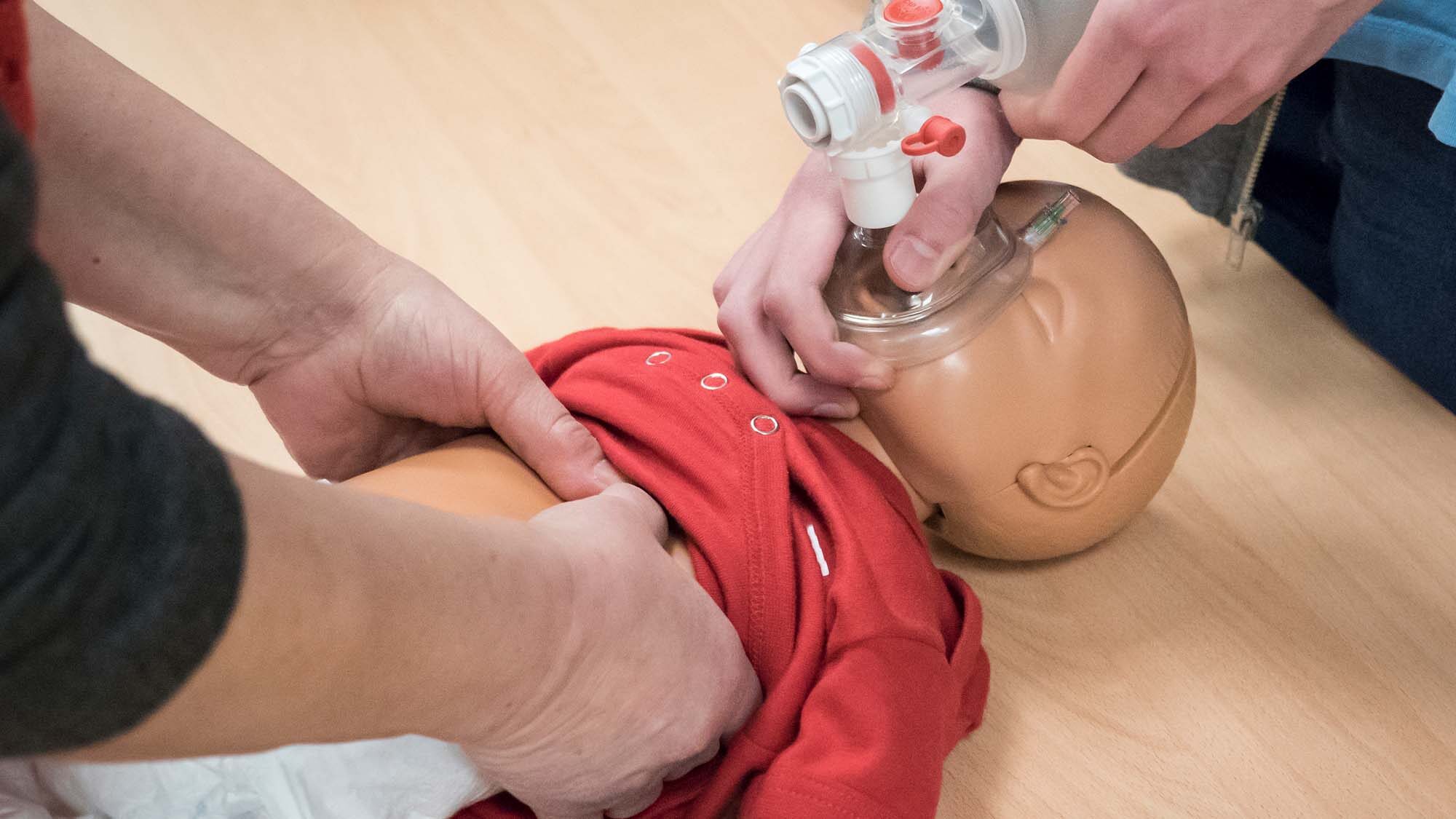Essay by: ISP070
Cardiopulmonary resuscitation, aka CPR, is a life-saving technique used during a cardiac arrest. Cardiac arrest is basically when the heart stops working. Though it occurs rather quickly, death is not often instant. Cardiac arrest happens when the heart’s demands are not met and the heart begins to lose its ability to pump effectively, straining the heart more and depleting it from its own oxygen supply. It is during this time frame that CPR can be performed and the process ideally reversed or stabilized, and thus life saving. Such a life-saving technique could be beneficial for everyone to learn, not only the medical professional.
As with all aspect of medicine, the CPR technique has changed over time, with the newest American Heart Association CPR guidelines emphasizing more on chest compression than on the airway. In this simplified format the fast and hard chest compression only technique helps maintain blood flow and oxygenation to the brain and heart. These new guidelines encourage more and more bystanders to perform the chest compression rescue efforts. According to the CPR certification online headquarters, CPR should become a mandatory obligation for everyone to learn.
In essence, I agree. I believe that it is important for non-healthcare professionals to know CPR and more so for the public in general to have some informal training or education regarding the basic skills of CPR rescue. Understandably in more severe cases, advanced life saving technique may be required and as such, are best carried out by trained professionals. However the most basic fundamentals of CPR should be known by most people, as it can save lives in so many situations, whether at home, work, school, or any social setting.
Citizen CPR, a nonprofit organization which provides CPR education, notes that CPR buys time for the victim. If CPR is given within the first few minutes following sudden cardiac arrest, then the person’s chance of survival doubles. Most physically capable individuals can perform CPR, especially in light of the new bystander CPR guidelines focus on chest compressions only.
It can be argued (by some) that laypersons are not capable to perform effective CPR, even with the most basic fundamental CPR knowledge because of various factors, such as individual responses to emergency situations, the social environment, legal concerns, and/or fear of causing harm. However, if all persons were to be made CPR savvy, than the likelihood of undue harm decreases, as does the legal concerns. Already in place is the Good Samaritan Law which protects individuals who give reasonable assistant (life saving or otherwise) to those who are injured, ill or incapacitated. According to Braslow and Brennan (1998), feelings of competence are critical to the decision to take action, and lack of competence may be responsible in part for low initiation rates.
In a population based study regarding citizen awareness and willingness to perform bystander CPR, Lee et al (2013) found that with increased citizen awareness, change in nationwide CPR policies and more shared knowledge of CPR techniques, it positively affected the willingness [and rate] of individuals to perform bystander CPR.
Bystander CPR does not need to be an extensive nor expensive training. It could and should be offered at workplaces, local community centers, and can even be taught to high school student along with their health education classes. Having such basic skills will prove to be more beneficial rather than detrimental. As Health and Safety Institute website notes, EVERYONE should be trained in CPR, because after all, wouldn’t you want someone to have at least tried to save your loved one if they needed it?
REFERENCES
AHA CPR Guidelines (2014) Retrieved from CPR certification headquarters website at http://www.cprcertificationonlinehq.com/aha-cpr-guidelines-latest-jan-2014/ Jan 12, 2014
Citizen CPR…The Critical Link (2012) Retrieved from: http://www.tulsacpr.com/
Good Samaritan Law. Retrieved from http://en.wikipedia.org/wiki/Good_Samaritan_law
Braslow, A., Brennan, R.T. (1998). Layperson CPR. American Heart Association Circulation Journal, 98:610-612. doi:0.1161/01.CIR.98.6.610
Lee, M.J., Hwang, S., Cha, K., Cho, G., Yang, H., Rho, T. (2013). Influences of nationwide policy on citizens’awareness and willingness to perform bystander cardiopulmonary resuscitation. Resuscitation, 84(7):889-94. doi: 10.1016/j.resuscitation.2013.01.009. Retrieved from: http://www.ncbi.nlm.nih.gov/pubmed/23328406
Rice, K. (2013). CPR and AED Training -Who needs to be trained? Health and Safety Institute. Retrieved from: http://www.hsi.com/Blog/bid/98911/CPR-and-AED-Training-Who-Needs-to-Be-Trained









